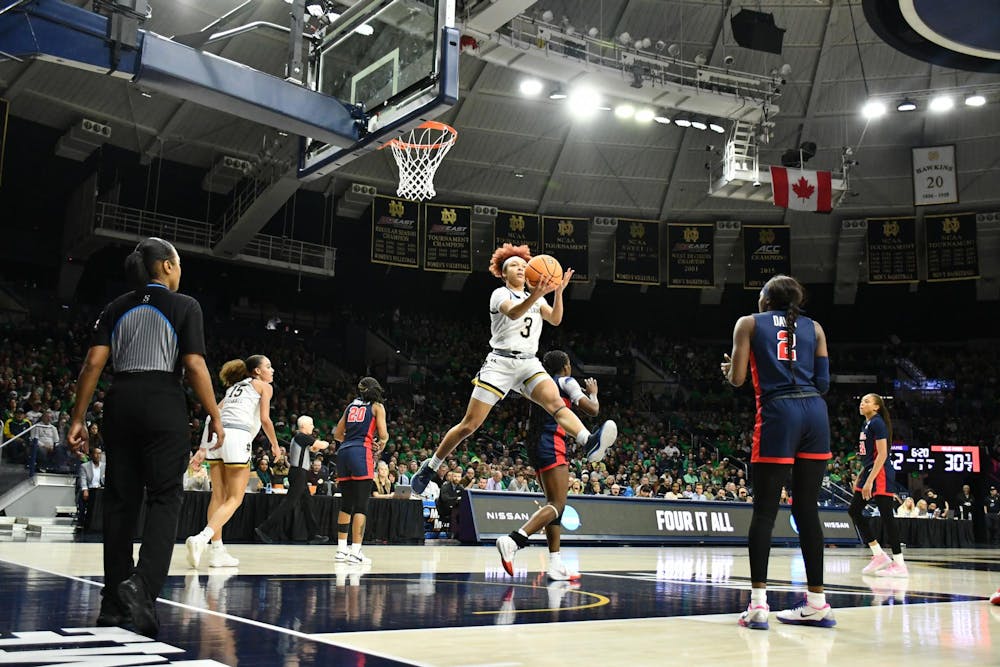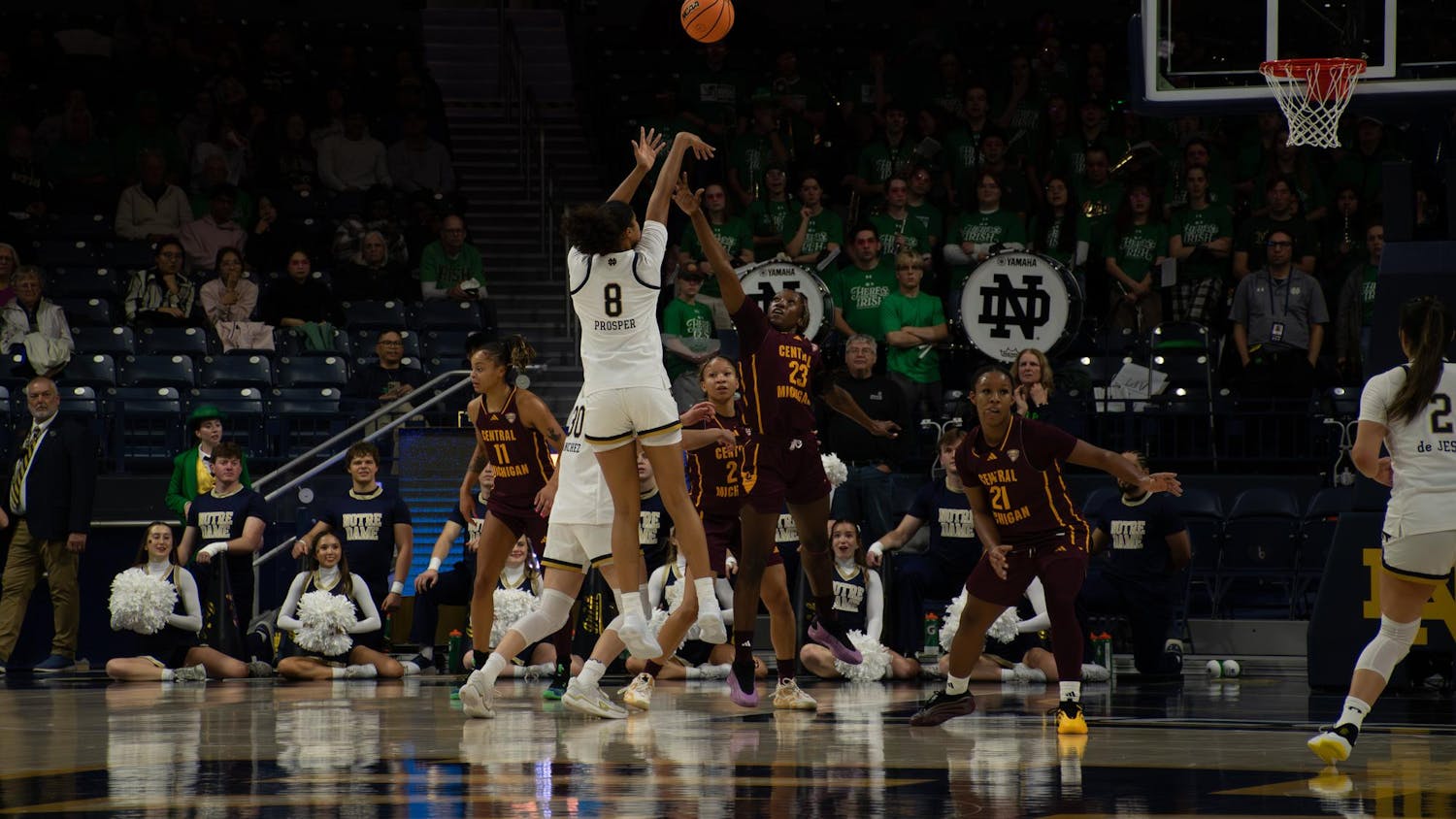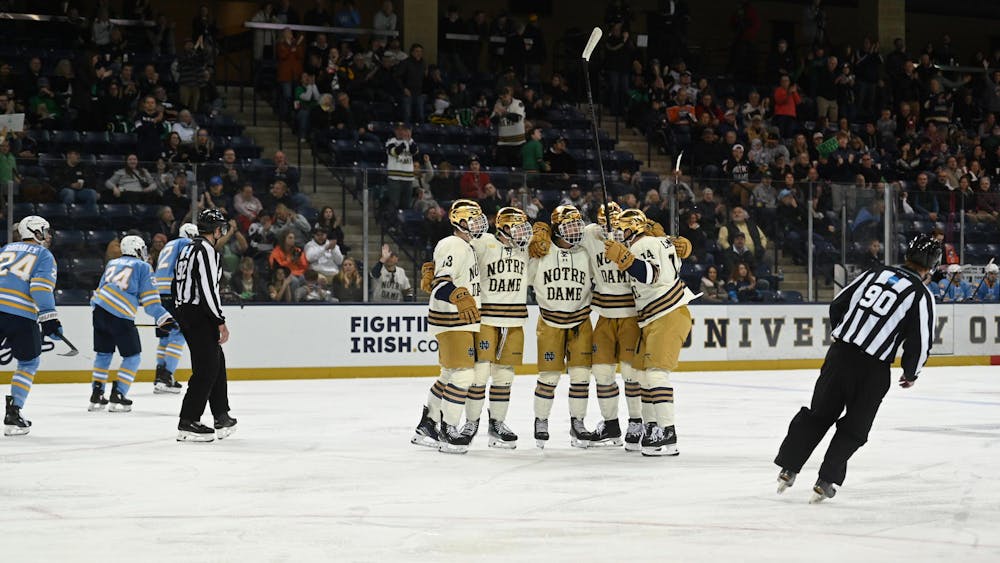Those who know me well know that I have no shortage of “hot takes” — particularly concerning sports. One of my most controversial opinions is that many sports — especially football — are better watched on television rather than live and in-person. My exception to that rule, though, is basketball. I think that the smaller arenas serve as better vehicles for fans to express their excitement, distaste or awe for whatever happens in the game. At the game, fans can feel timeouts called after a scoring run. Fans can feel a game-tying transition layup. And possibly, more than anything else, fans can feel the officiating.
Unfavorable calls (against the home team) result in loud disapproval. Attending a game in-person often means seeing some of the conversations that the cameras don’t pick up. It’s a brutally difficult job, and at the collegiate level, it’s typically only a part-time one. Most officials have other work as well to pay their bills. After attending countless home basketball games this year, my admiration for the officials has only increased.
Even in the midst of the extensively competitive and tense atmosphere, I was always amazed by how personable the refs were. Roger Ayers always talked with fans in the front row during media timeouts. Lee Cassell calmly talked to players and coaches, even popping a smile amidst the chaos. These officials are pros.
It’s one thing to try to evaluate the game based on the “black and white” rules as laid out in the official book. It’s another thing to do that while maintaining a personality, understanding that there is no “black and white” way to communicate or come across as a person. It’s difficult, but ultimately, it’s very serious. That doesn’t mean that it isn’t fun — or personable. You can laugh and still maintain a level of seriousness. But at the end of the day, the rules need to be enforced.
Unfortunately, during this past weekend of the NCAA women’s basketball tournament in Albany, New York, the officiating was not serious. By any stretch. In Notre Dame’s game against Oregon State, the officiating might have been the storyline. On ESPN’s home page, there was no mention of the outcome of the Sweet 16 matchup. But the website made sure to highlight Hannah Hidalgo’s displeasure with the referees — something she called “B.S.” in the postgame press conference.
For those unaware, in the final seconds of the first quarter, the referees sent Hidalgo to the bench to remove a small nose stud or ring. Throughout the season, Notre Dame’s freshman guard almost always wore the stud — both in-game and out. She said that prior to the Sweet 16, she never received any flack from the refs. However, that changed in the team’s biggest game of the season.
I have mixed emotions here. NCAA rules are very clear that no jewelry is allowed on the court (see rule 1-25.7). In general, I don’t blame the referees for enforcing that. Notre Dame has the responsibility to know what it can and can’t wear. The problem, though, is that in college basketball, many rules are simply not enforced at all. Think of 3 seconds in the lane or carrying the basketball. These violations are almost never called — except in the most egregious of situations (and even then, rarely!).
In the NCAA, rule 2-5.1 states that before the game, the referee will inspect all players’ equipment as well as everything on the court — including the ball and the clock. However, it seems like this procedure is very rarely followed — or only performed vaguely.
Hidalgo never changed her nose stud or put it in after the game began. She always had it in. In this case, the official screwed up, not Notre Dame. But unfortunately, the official didn’t pay the price. Notre Dame did.
The game went on, and Hidalgo was forced to sit out five valuable minutes, which is especially worrying for the Irish given that she typically plays the entire game. Decreasing Hidalgo’s production and playing time by 12.5% is a major advantage to Notre Dame’s opponent. Moreover, in the first few seconds of the game, play was stopped due a shot clock malfunction. The tenth of a second (after the decimal) was not appearing at the right time. Kudos to the officials for finding that — but why would that have not been checked prior to the game?
Unfortunately, the officials involved in Friday’s game may have been following the rules — in a “black and white” manner. But their application and communication of those rules was exceptionally impersonal without any regard for on-court play. The officiating was not serious by any means — a major concern in a nationally televised, regional round game.
Something has to happen from this. The NCAA should come out with clear guidelines on apparel along with clear guidelines on how and when officials should check gear. But more so, the officials involved in Friday’s game should not advance on to the Final Four. A major mistake like the Hidalgo incident should result in a downgrade. Notre Dame had every right to be upset. I’m honestly amazed how head coach Niele Ivey offered so much composure!
Regardless, I don’t think it significantly changed the outcome of the game, but you never know. Even with five more minutes of Hidalgo, I don’t think Notre Dame was ever going to be able to stop a player like Raegan Beers. Yet, Oregon State’s season lived on for two more days. Notre Dame never got a chance to avenge its Paris loss against South Carolina. The fact that poor officiating played any role in that outcome (albeit small) is a shame, and Irish fans have every right to feel passionate anger.
College basketball is serious. Friday’s officials were not.










